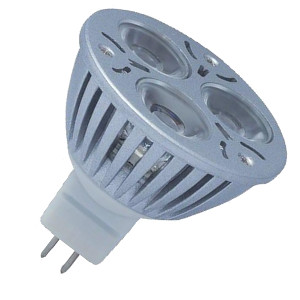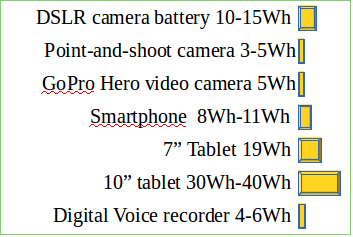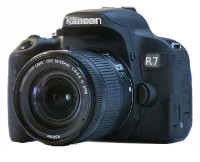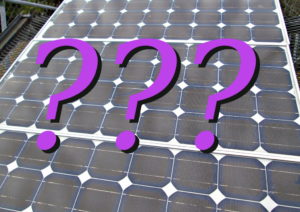 Watt-Hour Estimates for small 12V Solar Power Systems
Watt-Hour Estimates for small 12V Solar Power Systems
When choosing a solar power system you need solar panels and batteries that can supply and store more than the average watt-hours you will be needing each day to run your equipment.
You may have heard of watts, but are wondering what a watt-hour is.
A watt (abbreviated “W”) is a rate of use. It’s how fast you’re using up the energy in your battery. You can use a few watts and run for a long time, or a lot of watts, and run for only a short while. The inverter or dc-dc converter has to be sized to handle the peak watts you will need, but the batteries and panels are sized to supply the watt-hours you need.
A watt-hour (abbreviated “Wh”) is a total amount of energy or work you can do. It is the watts used (rate) multiplied by the number of hours the device is turned on.
watts x hours = watt-hours (Wh)
![]() The yellow bars on this page help you visualize the relative amount of power needed to run various devices.
The yellow bars on this page help you visualize the relative amount of power needed to run various devices.
Batteries
Battery Rule of thumb: Your battery should hold 1 to 3 times the watt-hours your equipment uses every day.
A larger battery lets you keep working longer, through several overcast days in a row. You have to decide if you’d rather to pay for and lug around the larger battery, or just stop work during cloudy periods.
Batteries are often rated in ampere-hours (Ah) The watt-hours (Wh) are the ampere-hours multiplied by the battery voltage.
Ah x volts = Wh
Below, the bar to the right represents the watt-hours stored in the listed solar battery system when it is fully charged:
*The usable capacity of Lead-acid batteries is about one-third of their rated capacity.
Solar Panels
Panel Rule of thumb: On a sunny day your panels should produce about triple the watt-hours your equipment uses.
For a simple rough estimate: tabulate the daily watt-hours you’ll be using, multiply watt-hours by 0.75 to get the approximate panel size you need in “watts.”
The solar panels are the real source of your power, not the batteries, so you can’t skimp on panels. In most tropical locations you can conservatively estimate the watt-hours produced by a solar panel on an average day to be about 4 x the rated watts of the panel. e.g. a “60 watt” panel will produce about 60 x 4 = 240 watt-hours of energy on a normal day. (On an overcast day, only one 8th of that!) On a relatively sunny day, you need the panels to produce enough watt-hours to not only run all your equipment, but also to charge up the system battery after a cloudy day.
Estimating you daily energy need
Portable solar power systems have very limited capacity so you must choose carefully the equipment you plan to run on them. Below, we give some estimates of what different equipment uses in watt-hours. Remember, everything depends on how long you leave things turned on.
Lighting
Goal Zero 1W LED light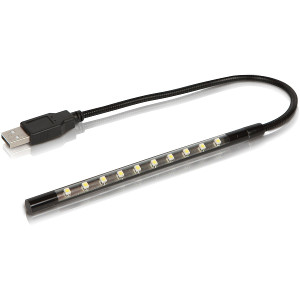
If I have a 1 watt LED light, and I leave it turned on for 1 hour, it will use 1 watt-hour of energy. (1 watt x 1 hour) If I habitually leave it turned on for 4 hours every evening, it will use 4 Wh per day.
![]()
A 3 watt LED bulb illuminated for 4 hours will use 3 W x 4 h = 12 Wh per day. ![]()
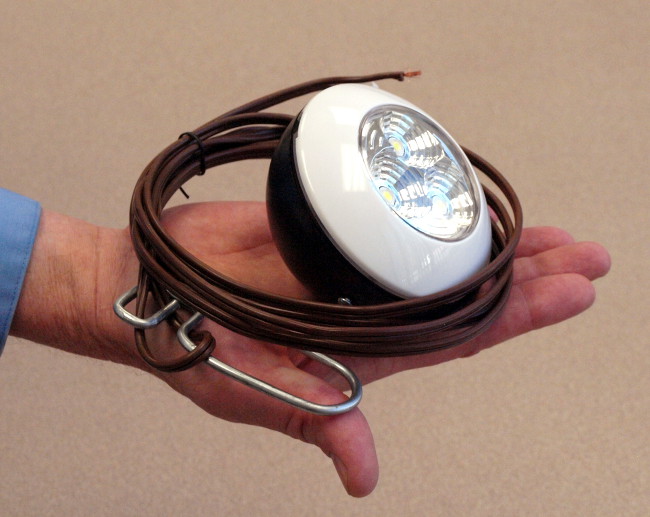
3W LED pendant light
Computers
Light bulbs are easy to calculate, because they always draw the same amount of power while they’re on. Computers and printers are harder because their average power draw depends on what they are doing. You can read the watt rating on the power brick that comes with them, but that is the maximum they ever use, and is usually much higher than the average. Turning on your computer’s power saving features can cut the average power draw in half, so you should enable those features, even when it is plugged into the “mains” if you will be running on solar power.
Although laptop computers draw less power than desktop systems, there are large variations from one laptop model to the next.
A computer that draws an average power of 20 watts and is used for 8 hours a day will need 20 W x 8 h = 160 Wh per day.
If you’re planning on running on portable solar power, choose your computer wisely. Here are some examples with my estimates of best case average power draw in translation work. I assume you use your computer exactly 8 hours each day.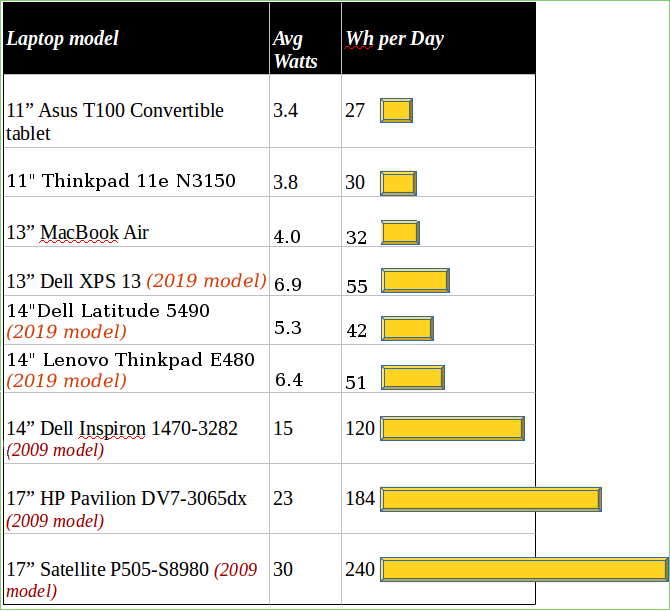
Note that in general older laptops will use considerably more power than the latest models using 4th or 5th generation Intel chips. For visual reference this is the capacity of the 72 Wh Half-Pint battery:
Although the Half-Pint could run any of the above computers for a short while, many couldn’t run for a full 8-hour day without sunshine. A “Villager” has triple the capacity of a Half-Pint and is more suitable for average laptop computers. A Power Hub can comfortably power two of the most power-hungry laptop computers, with energy to spare for lighting.
Picking a low powered computer
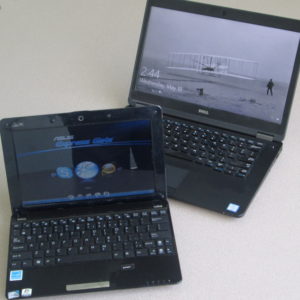 You can estimate the power draw of a laptop without owning and testing it yourself.
You can estimate the power draw of a laptop without owning and testing it yourself.
- Look for the average run time on battery as tested by reviewers. (for example 5.5 hours)
- Find the Wh size of the battery on the manufacturer’s site or in the reviews. (for example 68 Wh)
- Divide: 68 Wh ÷ 5.5 h = 12.4 watts average
This is the best you can expect if you keep the internal battery topped off. Recharging the internal battery is usually inefficient and will use up to 1.5 x more energy.
For more tips on selecting computers, see How to choose a computer for solar powered use
Printers
Ink-Jet printers use between 20 W and 35 W while printing, depending on the brand and model. Usually you can find this information on the manufacturer’s website and choose wisely. They use considerable power (4 W to 8 W) when idle and even use small amounts of power when turned “off,” so unplug them when not in use. You can print 100 to 200 pages in an hour.
Inkjet printing for one hour 20 Wh to 30 Wh ![]()
Laser printers are high powered inefficient devices. They average 325 W to 600 W while running, with spikes over 1500 W. Printing for one hour a day can use more power than running eight laptops all day long. Laser printers will not run on any of the small solar battery systems sold by GTIS, but we can design a custom setup to meet your needs.
BGAN Satellite Terminals
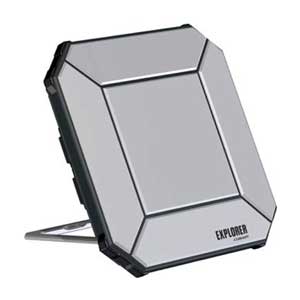 BGANs usually will be run off their internal batteries, and recharged periodically. Some can recharge directly from a solar panel. They use around 20 W while communicating, but typically you don’t need to use them for more than 30 minutes per day.
BGANs usually will be run off their internal batteries, and recharged periodically. Some can recharge directly from a solar panel. They use around 20 W while communicating, but typically you don’t need to use them for more than 30 minutes per day.
30 minutes of BGAN use per day 12 Wh ![]()
Projectors & Loudspeakers
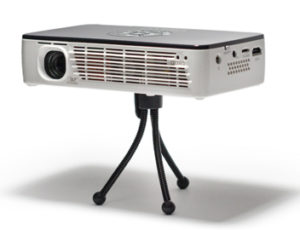 Mini LED powered projectors can run on solar powered battery packs. The brighter ones will need more power. Here are the watt-hours needed for a 2-hour movie showing at maximum brightness.
Mini LED powered projectors can run on solar powered battery packs. The brighter ones will need more power. Here are the watt-hours needed for a 2-hour movie showing at maximum brightness.
If you’re showing to a crowd, you also need amplified speakers. For a 2-hour movie:
Smartphones, Tablets, Cameras etc.
 You can read the Wh rating right off the battery of most devices, or calculate it from the milliamp-hour rating. (1000 mAh = 1.0 Ah.) Multiply Ah by the battery voltage (3.7 V for most lithium cells) to get watt-hours. The recharger is never 100% efficient, so you should multiply by about 1.2 to get a good estimate of the power needed. If you don’t plan on recharging your device every day, divide the watt hours needed by the number of days between recharges. Here are some estimates per recharge for various devices:
You can read the Wh rating right off the battery of most devices, or calculate it from the milliamp-hour rating. (1000 mAh = 1.0 Ah.) Multiply Ah by the battery voltage (3.7 V for most lithium cells) to get watt-hours. The recharger is never 100% efficient, so you should multiply by about 1.2 to get a good estimate of the power needed. If you don’t plan on recharging your device every day, divide the watt hours needed by the number of days between recharges. Here are some estimates per recharge for various devices:
Fans
Fans draw more power than you might expect, and people usually want to run them all day long, so only the tiniest of fans can be used on a portable sized solar power system.
“O2 Cool” makes some small efficient fans designed to run on battery power. There is an 8-inch model, which draws 2.4 W on low and 3.2 W on high. Running it for 8 hours costs 19 Wh on low or 26 Wh on high. Their 10-inch fan will cost 40 Wh on low and 68 Wh on high for an 8 hour workday.
8 Hours of fan use:
O2 Cool 8-inch fan 19-26 Wh ![]()
O2 Cool 10-inch fan 40-68Wh ![]()

 GTIS Power and Communications Systems
GTIS Power and Communications Systems
